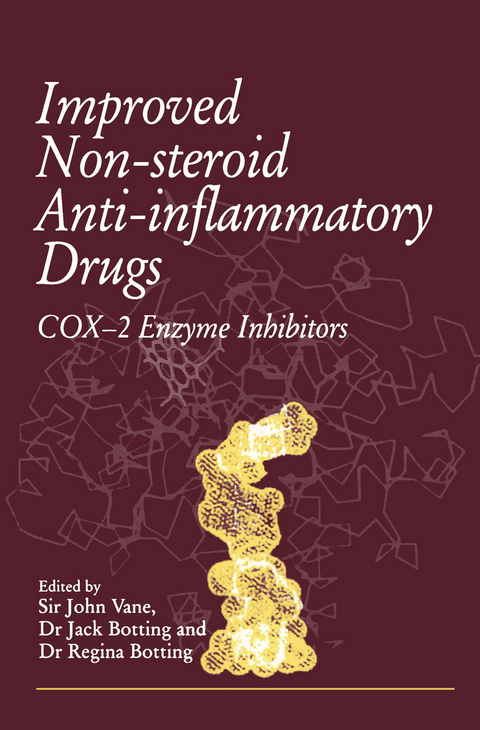
Improved Non-Steroid Anti-Inflammatory Drugs: COX-2 Enzyme Inhibitors
Springer (Verlag)
978-94-010-9031-5 (ISBN)
Sir John Vane is the Director General at the William Harvey Research Institute, an independent charitable foundation within Queen Mary and Westfield College of the University of London, UK. Sir John Vane shared the Nobel Prize in Physiology or Medicine in 1982 for his discoveries of the mechanism of action of aspirin and of prostacyclin, as well as his work on other prostanoids. Jack Botting is Consultant at the William Harvey Research Institute, an independent charitable foundation within Queen Mary and Westfield College of the University of London, UK.
1 Overview — mechanisms of action of anti-inflammatory drugs.- 2 The three-dimensional structure of cyclooxygenases.- 3 The dilemma of two cyclooxygenases: identifying the roles of COX-1 and COX-2 in inflammation and apoptosis.- 4 Inducible enzymes with special reference to COX-2 in the inflammatory response.- 5 NSAID mechanism of action: the role of intracellular pharmacokinetics.- 6 Differential inhibition of COX-1 and COX-2 in vitro and pharmacological profile in vivo of NSAIDs.- 7 COX-2 expression and inhibition in human monocytes.- 8 Expression and regulation of COX-2 in synovial tissues of arthritic patients.- 9 An inhibitor of injury-induced COX-2 transcriptional activation elicits neuroprotection in a brain damage model.- 10 COX-2 expression in labour.- 11 Re-evaluation of gut toxicity of NSAIDs.- 12 NSAID: can renal side effects be avoided?.- 13 Pharmacology, safety data and therapeutics of COX-2 inhibitors.
| Zusatzinfo | 200 p. |
|---|---|
| Verlagsort | Dordrecht |
| Sprache | englisch |
| Maße | 155 x 235 mm |
| Themenwelt | Medizin / Pharmazie ► Medizinische Fachgebiete ► Pharmakologie / Pharmakotherapie |
| Medizin / Pharmazie ► Pharmazie | |
| ISBN-10 | 94-010-9031-9 / 9401090319 |
| ISBN-13 | 978-94-010-9031-5 / 9789401090315 |
| Zustand | Neuware |
| Haben Sie eine Frage zum Produkt? |
aus dem Bereich


